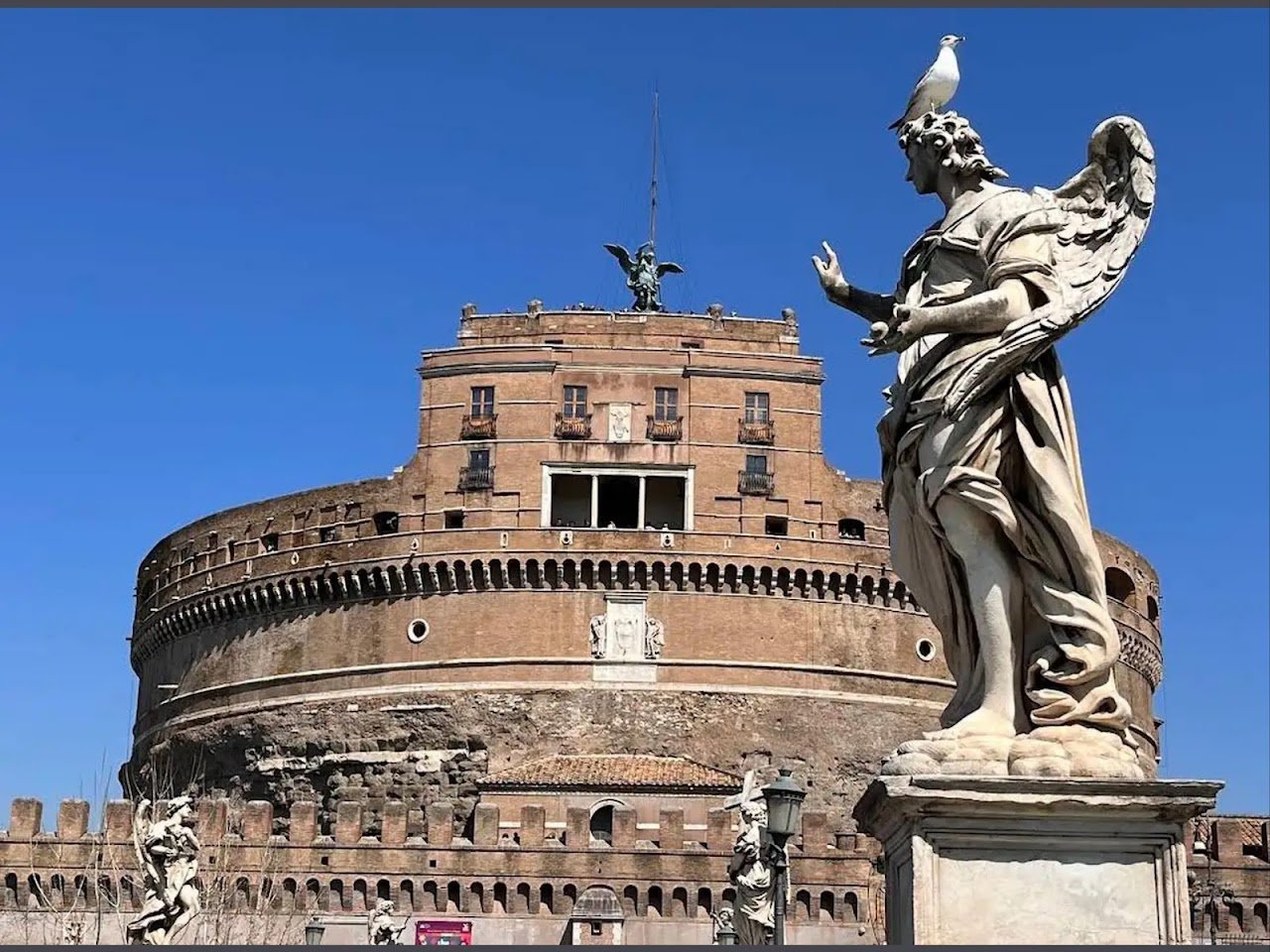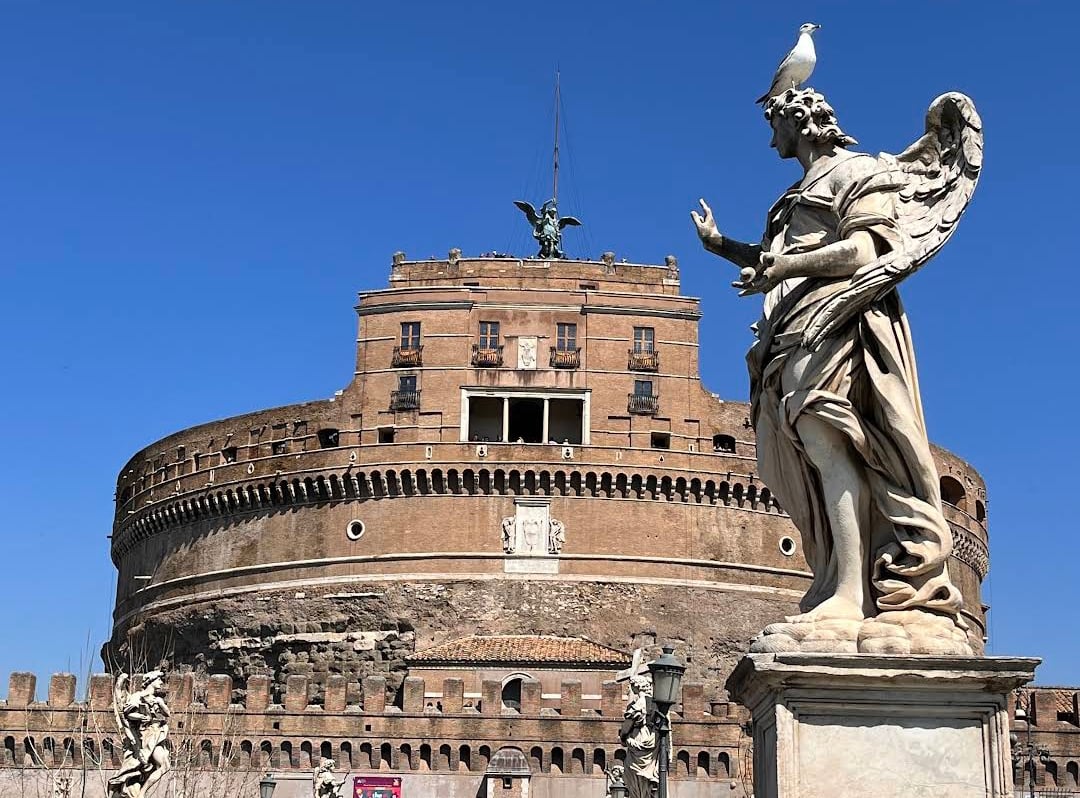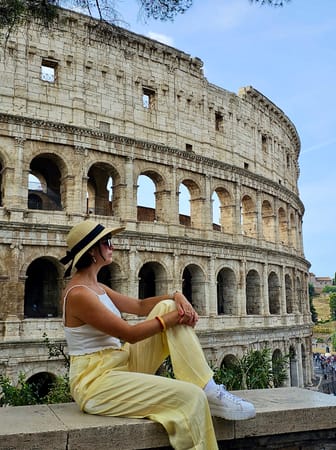Castel Sant'Angelo





Ask ThatchGPT
Suggest a local expert to plan my trip
Suggest an unique itinerary for my Italy trip
What foods do Italy locals eat
What are some true hidden gems in Italy
Help me brainstorm trip ideas for Italy
Help me plan a family-friendly trip to Italy
What people say
Pedro Pereira
Available for hire
"Castel Sant'Angelo, also known as the Mausoleum of Hadrian, is a towering cylindrical structure with a rich history in Rome, Italy. It has served various purposes throughout the centuries, making it a fascinating landmark to visit. Here's a breakdown of its key aspects:
Origins as a Mausoleum (135-139 AD):
Commissioned by Emperor Hadrian as a tomb for himself and his family.
Constructed from concrete and faced with travertine marble.
Cylindrical design with several chambers and an impressive dome.
Originally adorned with a bronze quadriga (chariot) statue of Hadrian.
Transformation into a Fortress (280 AD - Present):
With the decline of the Roman Empire, the mausoleum became part of the Aurelian Walls, Rome's defensive fortifications.
Popes fortified the structure further throughout the Middle Ages, using it as a refuge and a strategic point.
The Passetto di Borgo, a fortified corridor, was built to connect the Castel Sant'Angelo to the Vatican for a safe papal escape route.
Papal Apartments and Prison (15th - 19th Centuries):
Popes used luxurious apartments within the castle walls, offering stunning views of Rome.
The building also served as a prison for famous figures like Benvenuto Cellini, a sculptor and writer."
Read more in:
Monica Mikhail
"Castel Sant'Angelo is a historic fortress located in Rome, Italy. It was originally built as a mausoleum for the Roman Emperor Hadrian in the 2nd century AD, and was later converted into a castle by popes in the Middle Ages. The castle is located on the banks of the Tiber River and is connected to the Vatican City by a fortified corridor. It was used as a refuge for popes during times of political unrest, and also served as a prison and a military fortress over the centuries. Castel Sant'Angelo is known for its stunning architecture, including a cylindrical tower and a beautiful bridge leading to the entrance of the fortress. The interior of the castle features impressive works of art and frescoes, as well as historical exhibits that showcase the building's rich history. One of the most famous features of Castel Sant'Angelo is the Passetto di Borgo, a fortified corridor that connects the fortress to the Vatican City. The corridor was built in the 16th century as an escape route for popes during times of danger, and was famously used by Pope Clement VII during the Sack of Rome in 1527. Today, visitors can explore the castle and its exhibits, as well as enjoy the stunning views of Rome from the top of the fortress. "
Read more in:
Linda Miller
"Castel Sant'Angelo, also known as the Mausoleum of Hadrian, is a towering rotunda initially commissioned by the Roman Emperor Hadrian as a mausoleum for himself and his family. The popes later used the building as a fortress, a castle, and even a prison. The castle is connected to the Vatican City by a secret passage called the Passetto di Borgo. This passage was used by the popes to escape to the castle in times of danger. The castle was featured in several films, including "The Da Vinci Code" and "Angels & Demons.
The structure was built in the 2nd century AD and was once the tallest building in Rome. The exterior is made of travertine marble. The interior contains a series of chambers and passages, including a large central chamber where Hadrian's sarcophagus was once located.
In the 6th century AD, Pope Gregory the Great had a vision of the Archangel Michael sheathing his sword on top of the mausoleum, signaling the end of the plague. As a result, the building was renamed Castel Sant'Angelo (Castle of the Holy Angel)."
Read more in:
Mentioned in these guides
About Castel Sant'Angelo
Get the inside scoop on Castel Sant'Angelo from local experts, travel creators, and tastemakers. Browse genuine trip notes, Castel Sant'Angelo reviews, photos, travel guides, and itineraries from real travelers and plan your trip with confidence.
Phone
Save this spot for later or start mapping out a new trip today
Try our AI Travel Assistant and get instant answers to any questions about your trip.
Ask ThatchGPT


